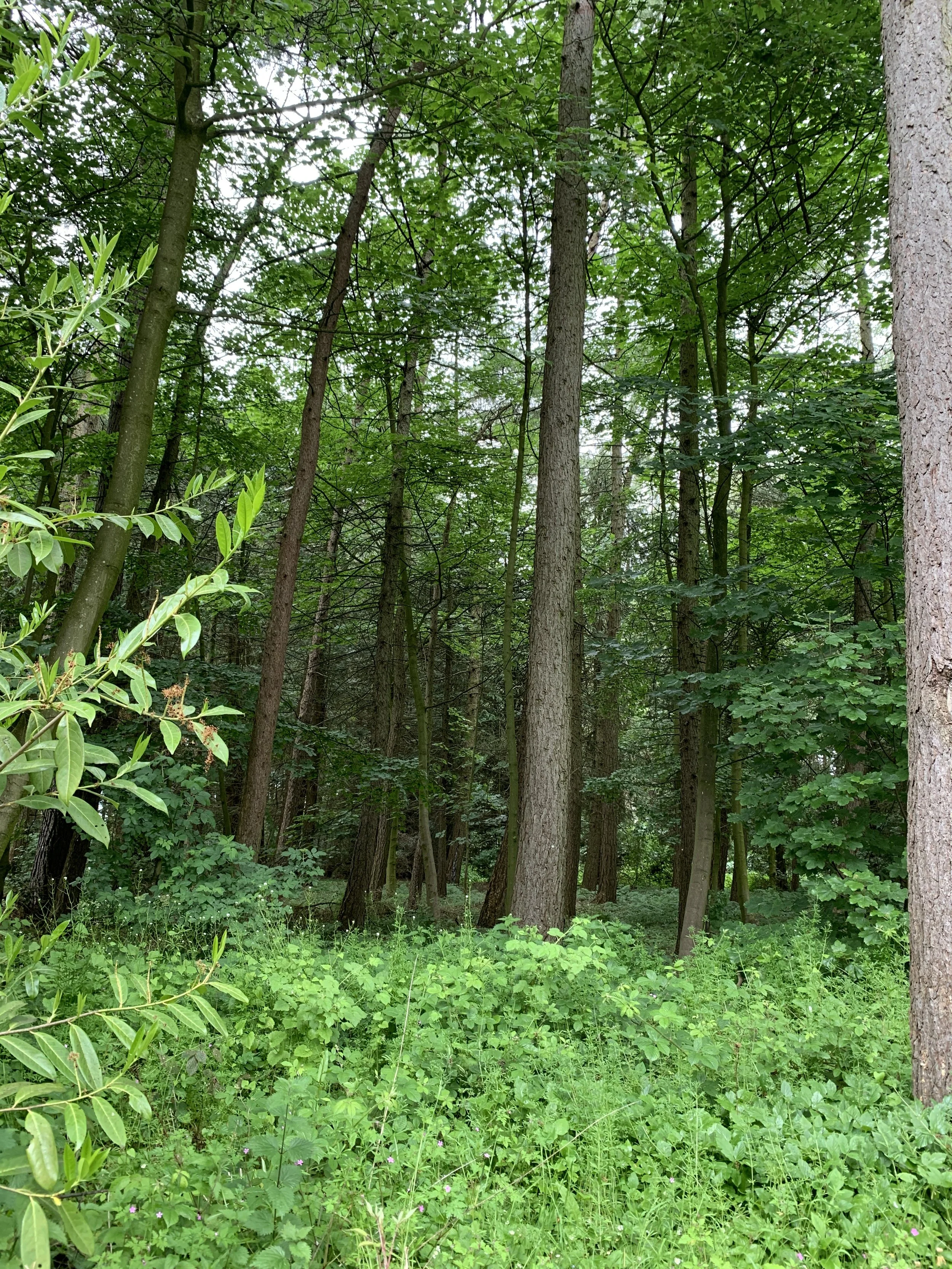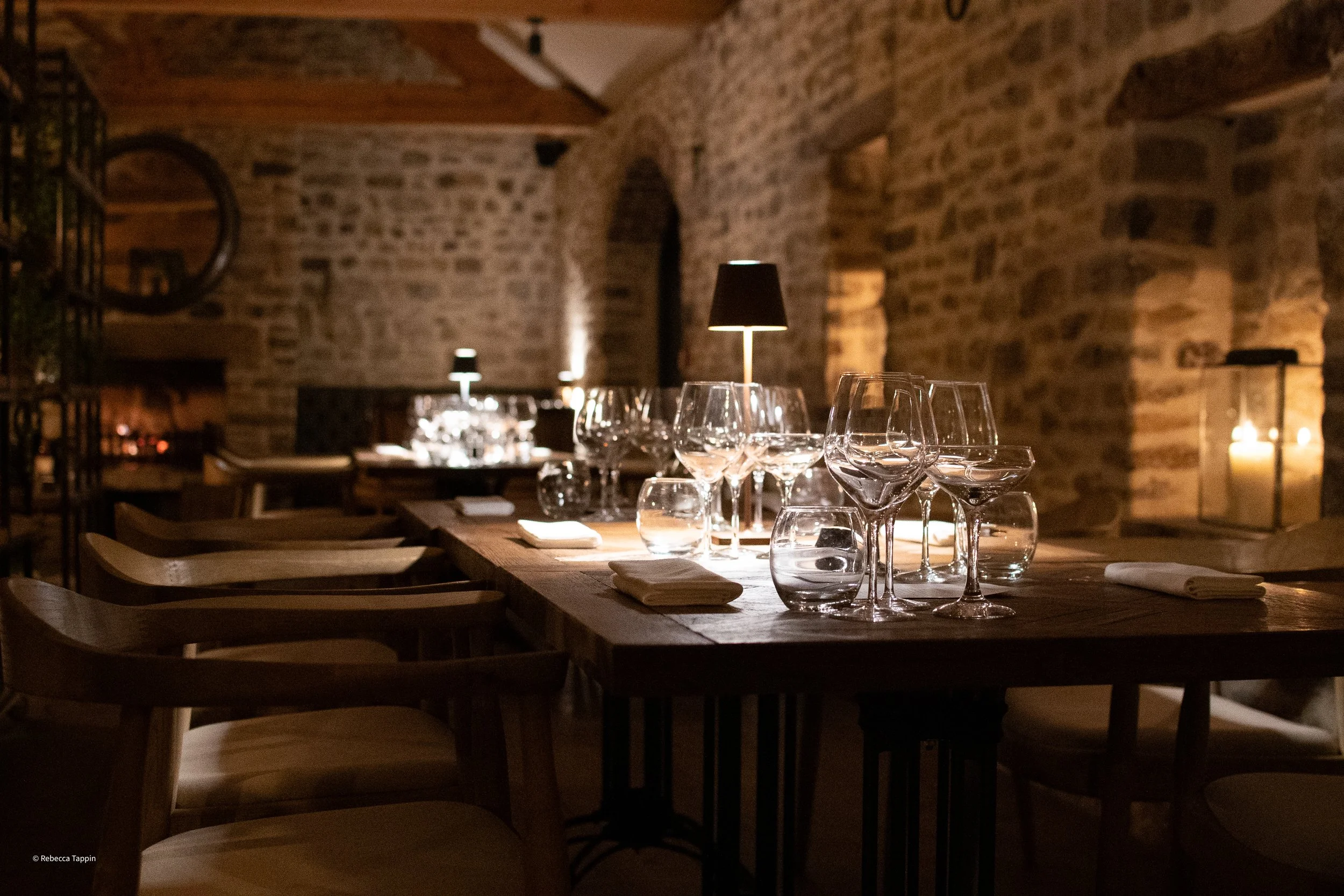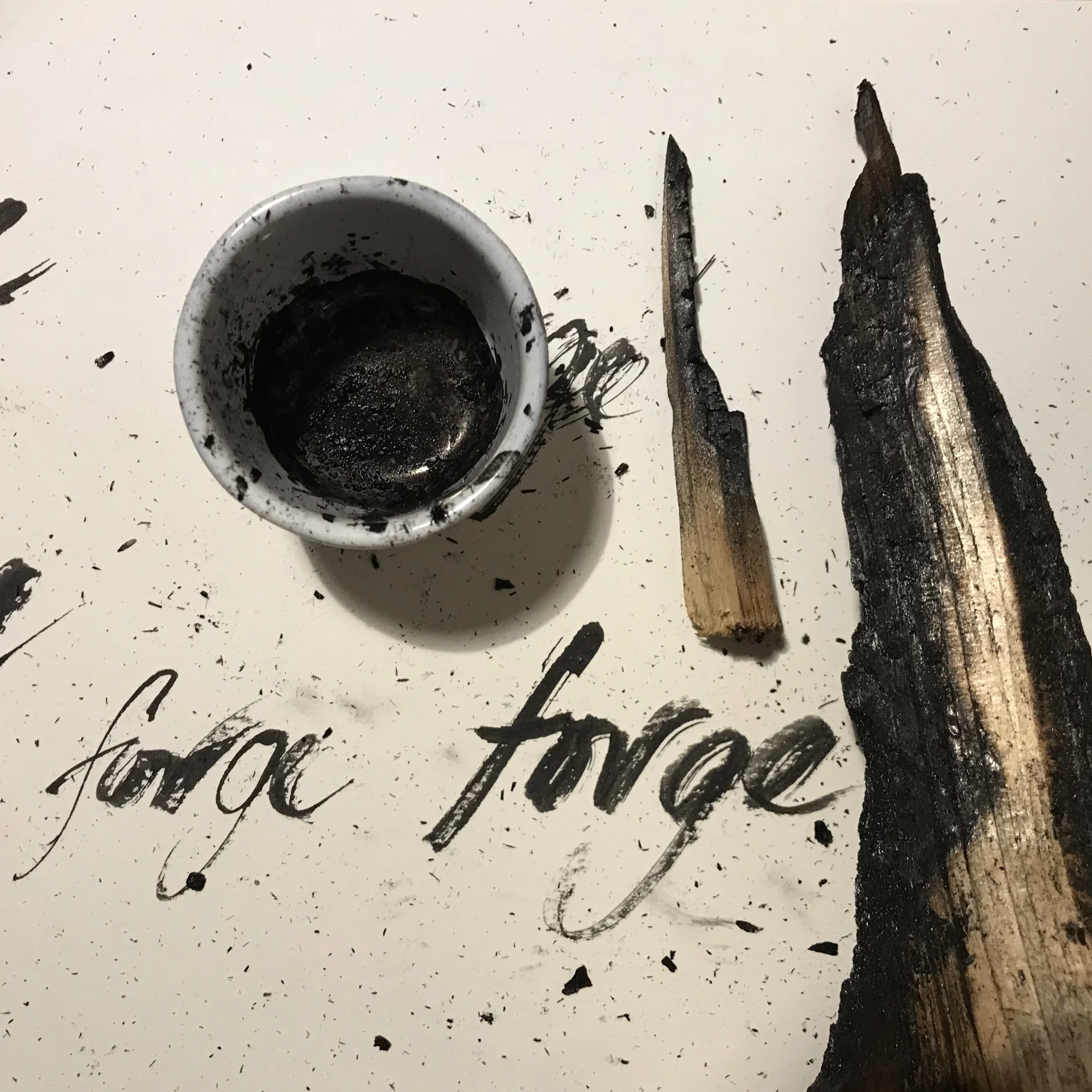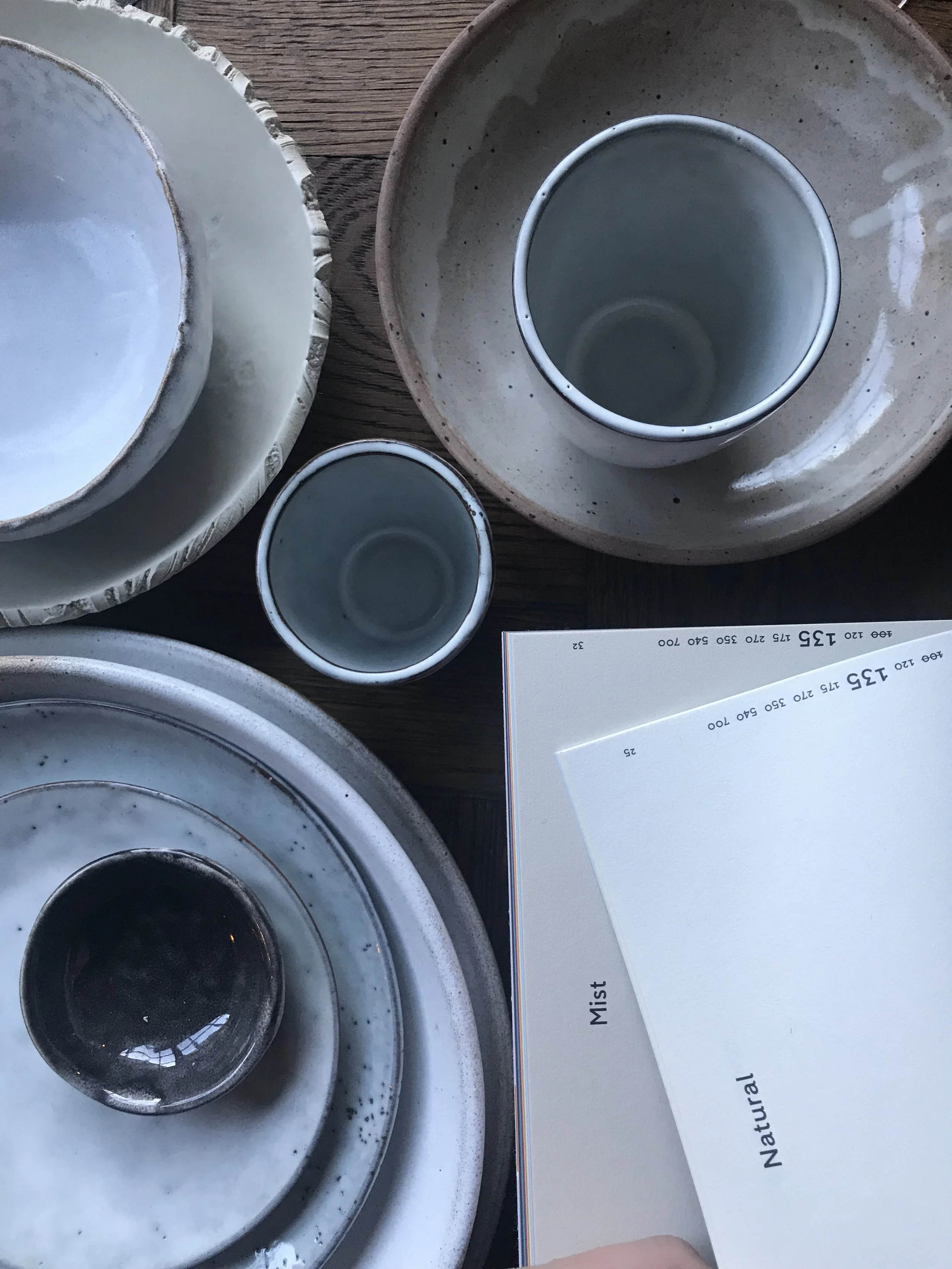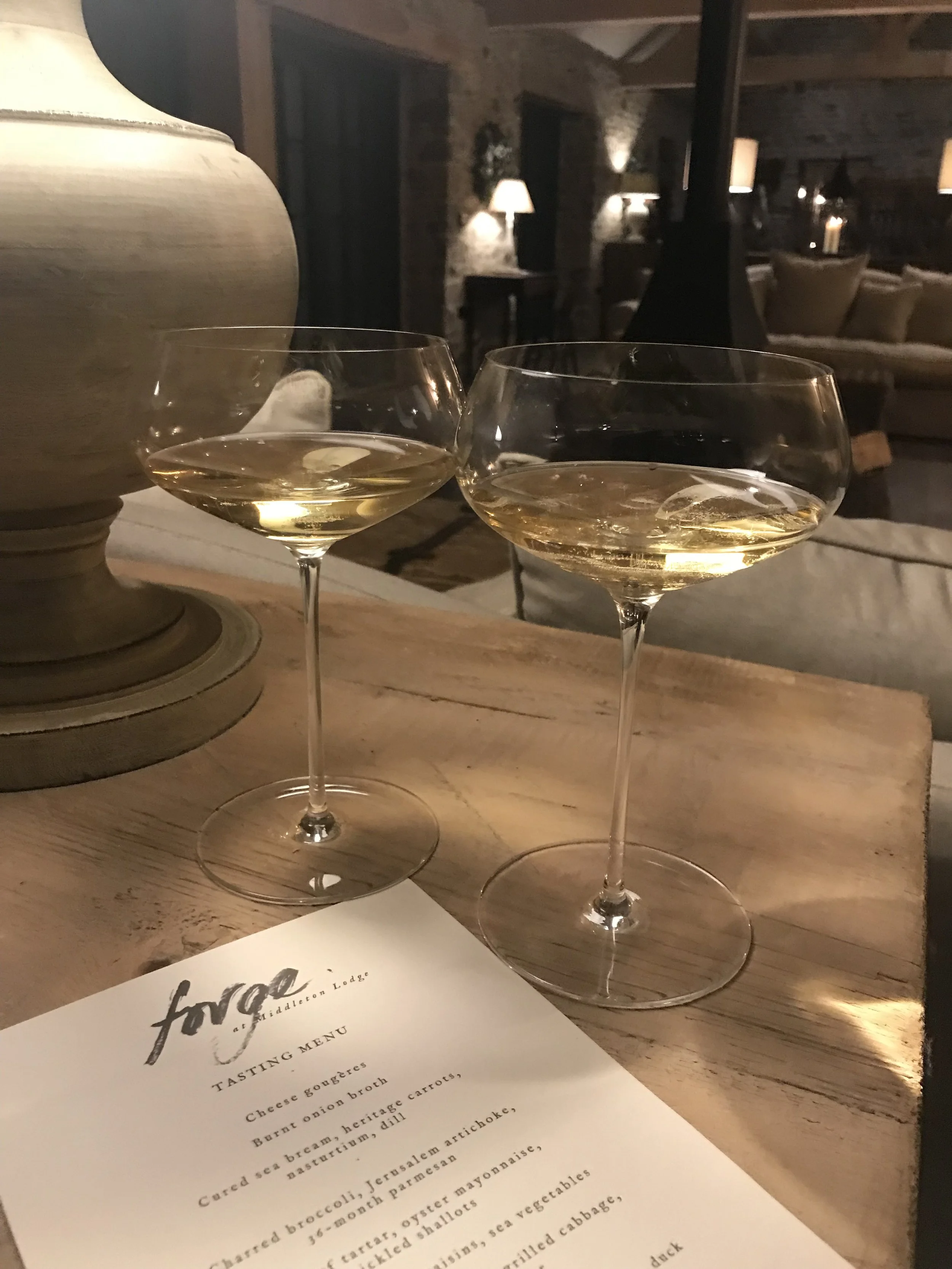Forging the Forge
Creating a Michelin Starred Restaurant at Middleton Lodge Estate
The Forge at Middleton Lodge
The Concept
How do you create two restaurants in a fairly remote area? We wanted to create a fine dining restaurant to contrast (rather than compete with), The Coach House, which already had a strong presence of its own, with delicious estate to plate seasonal dishes supplied by our kitchen garden. This needed to have its own identity, but sit as part of the estate. We had a location in mind, a couple of delapidated stone sheds behind the farmhouse. It needed to be exquisite, but authentic - true to the space it inhabits. Bringing an earthy essence of the estate - primal, earthy – bringing in produce foraged from the woods, kitchen gardens and wider estate and beyond, felt right, particularly with the unassuming nature of the buildings we’d identified for it.
In 2018 as Creative Director at Middleton Lodge, I wrote the following:
original mood board for forge
Refined, exacting, sublime, perfect in its imperfection, tactile, romantic, sensorial, and elemental. Everything is about the experience - creating a memory. This is food in art form.
Inspired by the old buildings
When we started work, the old stone sheds at the back of the farmhouse were basically held together by long tendrils of ivy and cobwebs. Full of character, these were intimate and far more rustic than some of the other spaces on the estate. We rebuilt them as they were (if a little more structurally sound), reinstating part of the building that had been demolished decades before but was on the 18th century plans.
Senses and the story
The flavours and textures of the food are the main event, but getting the surroundings right is crucial to support and enhance the experience. This sometimes gets overlooked when creating a restaurant, but we are sensory creatures - we don’t just use one sense to experience, it is all of the senses, all at once. In a fine dining experience, you want to savour every mouthful, every texture - the notes and the story of the food, and the carefully selected wine flight, creating a symphony of flavours. This same amount of thought and attention needs to go into the design of the surroundings. Much like the slowed down experience at the spa, if something is off in the space you are in, it will jar.
“The scent of the forest floor rose thick and rich, as if the earth itself were alive and breathing in the darkness. The roots of the trees that had been there for centuries seemed to whisper to one another, telling stories only they could understand.”
I was inspired by the perfectly imperfect concept of wabi sabi, and the novel “Perfume” by Patrick Suskind - which immerses the readers in a sensory world of scent and dark obsession. The book includes vivid and evocative descriptions of the scents of nature - creating sensory experience at a profound level which is of course the aim for exceptional fine dining. It’s about finding the essence of the place - to ensure the design fits with the intent of the restaurant, and within the landscape itself.
Fire & light
An early slightly crazy (I like to think poetic!) idea was to have the restaurant lit only by natural light - creating an ever changing layering of daylight and candlelight. It would have been terribly romantic of course, but it would not have showcased the incredible food.
The solution works well: individual lights on each table, allowing you to focus on the food (and your companions). It still feels incredibly intimate, maintains that romantic feel, but focusses your attention on the exquisite details of the food. In the evenings, candles twinkle on the iron shelves dividing up the space, and on cooler nights, a fire, fed by fallen wood from the estate, roars in the hearth at the end of the room.
“Light creates beauty; shadow creates mystery. The candle flame flickering on the walls, transforms the room into a place where time seems suspended, and where the faint shadows play tricks with the eye, making every surface seem more delicate, more precious.”
The intimate atmosphere of forge at night
Of course, a Forge is all about fire. The name itself came from a conversation with one of the older joiners on the estate when we started the build. He mentioned one day that he remembered this being the old estate forge. It stuck - fitting in perfectly with the rustic nature of the buildings, and even echoing linguistically the earthy nature of foraging. Fittingly too, I created the logo out of the very embers of the hearth there - it is the signature of the estate.
Details: design + materiality
I put a lot of thought too into the menu design - even the paper for the menus, what you hold in your hands, has been carefully selected to add subtle layers to the experience. There’s something about sitting in a rustic stone building, on seats upholstered in simple linen or wool, sipping from delicate slender stemmed glasses of champagne, before being brought exquisite morsels of food presented on handmade plates (or sometimes even polished stone) - it’s all about that contrast, and all of it is intentional.
In the bar, we used an old tree that had been growing behind the building to create the roof trusses. Stone was gathered from the quarry in one of the estate fields. This is a space that has grown from the very land it sits on.
Light streaming through the Forge - looking through towards the Forest Spa
Michelin
In 2024, we were awarded a Michelin Green star for the estate, an accolade deservingly awarded across the board. When we were setting up the Coach House, growing as much as we could in the kitchen gardens (it could never be all, but what we could) - to bring an authenticity that at least part of what was on your plate had recently been growing in the gardens a mere few footsteps away. Big country estates, were, as I pointed out, historically created to be self sustaining - so being able to return it to do that in a more contemporary way made sense - ethically, but also in a real business sense. We installed a bore hole when we renovated the Coach House, and later an augur to process wood and heat the water for baths and showers. Minimising food miles was the next step - not only is it the right thing to do, an important part of the brand story - but it tastes better too.
All of this is background - setting it up for the team : for the talented chefs to work their magic, (and the wonderful front of house team to bring it to you). In 2024, Head Chef Jake Jones was awarded Young Chef of the year - creating an ever changing creative menu, inspired by the land. Even the bread course is divine.
In 2025, we won a Michelin Star.







